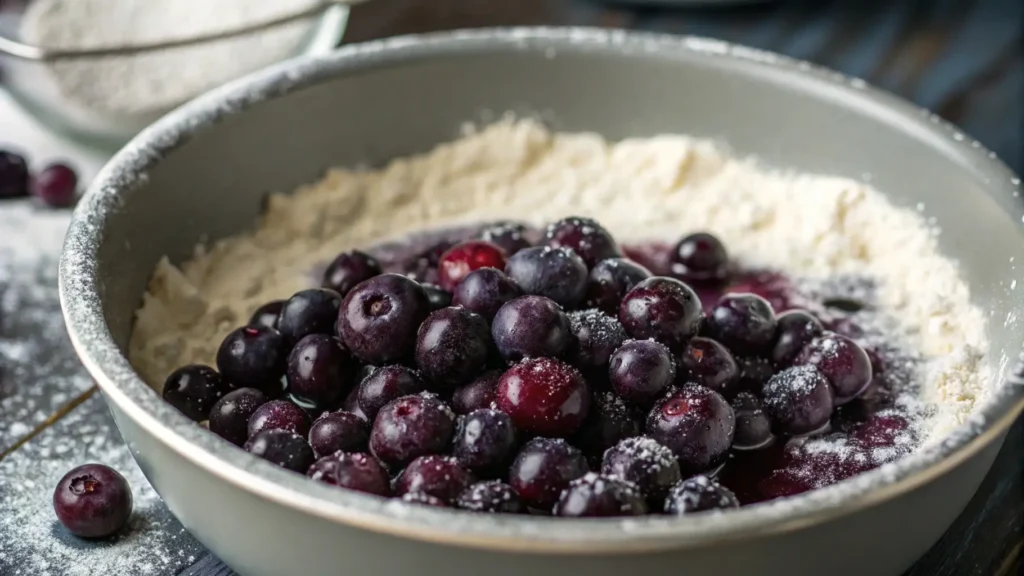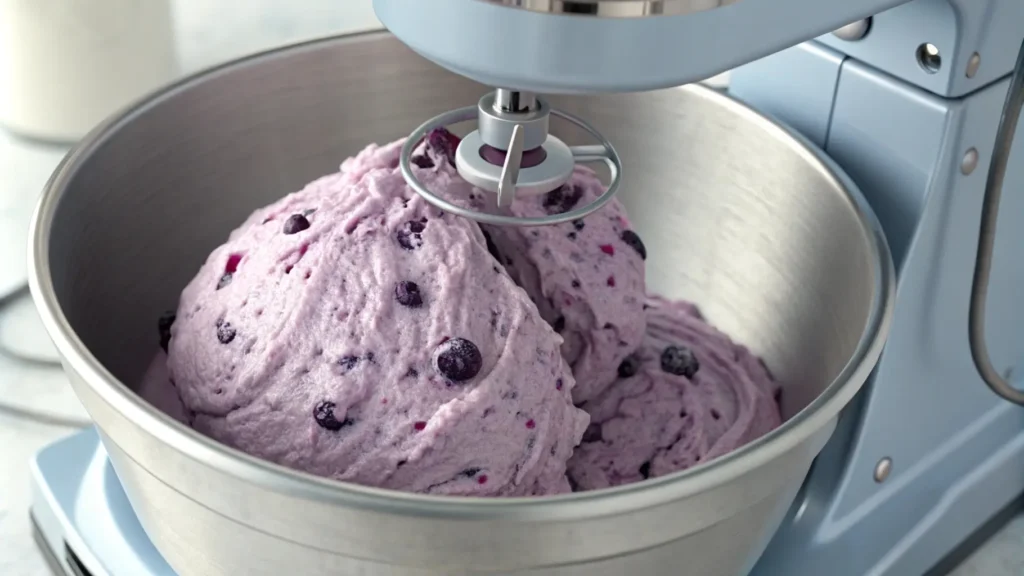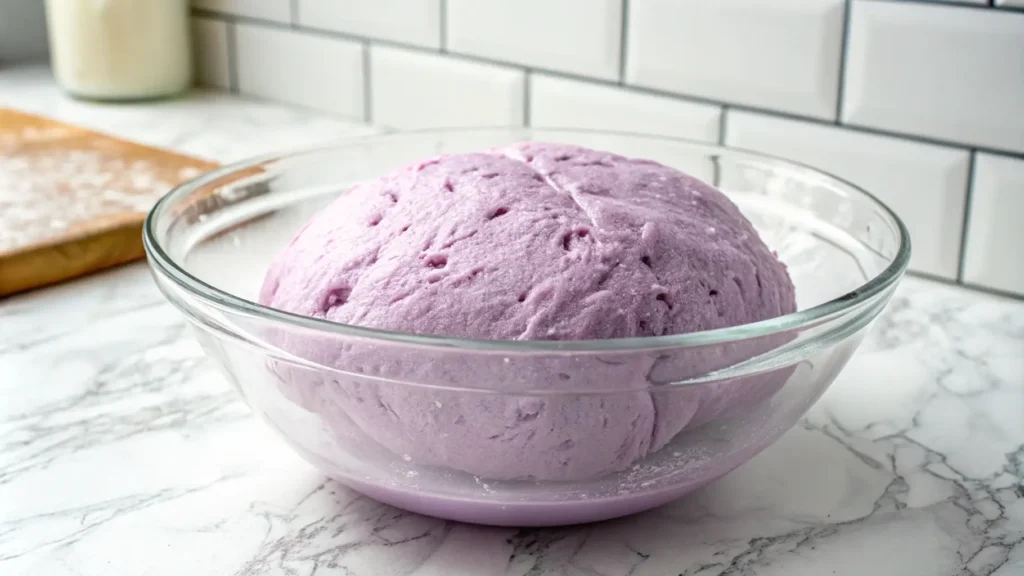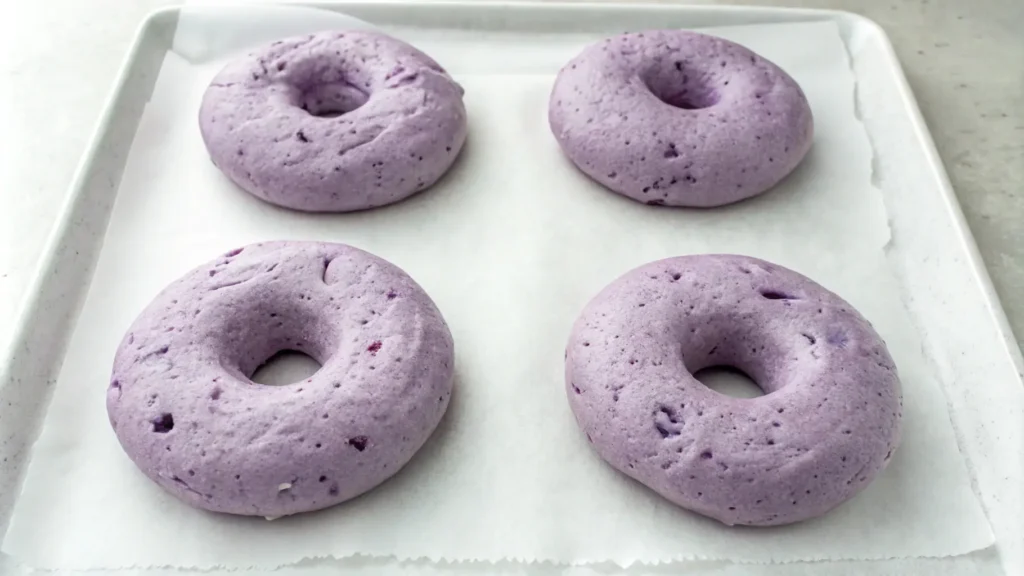Bagels are a beloved breakfast staple, with their chewy texture and round shape, they hold a special place in many people’s hearts. One variation of this classic that has gained popularity over the years is the blueberry bagel. Infused with sweet, tangy berries and often paired with cream cheese, blueberry bagels offer a delightful twist on the traditional bagel, making them a go-to choice for breakfast or brunch.
The History of Bagels and Why Blueberry Bagels Stand Out
The origins of bagels date back to 17th-century Poland, where they were first created as a form of sustenance for the Jewish community. Bagels have evolved over time, especially in the United States, where they became a mainstream snack, with endless variations, including the famous blueberry bagel. Blueberry bagels stand out because they combine the comforting, familiar taste of a traditional bagel with the sweet burst of fresh or dried blueberries, offering a perfect balance of flavors.
Why Blueberry Bagels Are a Perfect Breakfast Choice
Blueberry bagels are a great breakfast option for several reasons. They are not only delicious but also packed with antioxidants from the blueberries, which provide health benefits. The subtle sweetness of the fruit pairs wonderfully with a spread of cream cheese or butter, making it an indulgent yet satisfying way to start the day. Plus, they are easy to prepare and enjoy, whether toasted or fresh, making them a convenient breakfast option for busy mornings.
What Makes the Best Blueberry Bagel?
The perfect blueberry bagel combines a chewy, slightly crisp exterior with a soft, flavorful interior, all while balancing the sweetness and tartness of blueberries. Several key factors influence the texture, taste, and overall quality of the bagel. Let’s explore what makes the best blueberry bagel.
Key Ingredients for the Perfect Blueberry Bagel
For a blueberry bagel that stands out, the quality of ingredients is essential. Key ingredients include:

- Flour: The base of any great bagel, providing the necessary structure.
- Blueberries: Fresh or frozen, blueberries add flavor and texture.
- Yeast: To achieve the classic chewy texture, yeast is crucial for the dough’s rise.
- Water: Proper hydration helps to create the bagel’s dense yet tender texture.
- Sweeteners: A touch of sugar or honey enhances the sweetness and encourages the dough to rise.
Fresh vs. Frozen Blueberries: What Works Best?
Both fresh and frozen blueberries can work well in blueberry bagels, but each has its pros and cons. Fresh blueberries tend to have a firmer texture and a more vibrant color, while frozen blueberries may burst more during baking, releasing juice that can slightly alter the bagel’s texture. The choice between fresh and frozen depends on your preference for texture and flavor, though both can deliver delicious results.
The Role of Yeast in Bagel Dough
Yeast is essential for creating the signature chewy texture of a bagel. It ferments the dough, causing it to rise and develop air pockets. This gives the bagel its dense but soft crumb. In bagel recipes, yeast is often combined with a slow fermentation process, which further enhances the bagel’s flavor. The right balance of yeast is crucial for achieving the perfect bagel rise without making the dough too airy.
Choosing the Right Flour for Bagels
The type of flour you use plays a significant role in the texture of your bagel. High-protein flours, such as bread flour, are ideal because they contribute to the bagel’s chewy texture. The protein content helps to develop gluten, which gives the bagel its structure. Avoid using all-purpose flour, as it may result in a softer, less chewy bagel. Bread flour is the best choice for achieving that signature dense yet tender consistency.
Step-by-Step Guide to Making Blueberry Bagels at Home
Making blueberry bagels at home is a rewarding experience that allows you to enjoy freshly baked bagels with the perfect balance of chewy texture and fruity sweetness. Follow this step-by-step guide to create your own batch of delicious blueberry bagels.
Preparing the Dough
The dough forms the foundation of your bagels, so it’s essential to get it right. Here’s how to prepare the dough for your blueberry bagels.

How to Mix the Dough Properly
Start by mixing your dry ingredients—flour, yeast, salt, and any sweeteners—in a large bowl. In a separate container, combine the warm water with the yeast and let it dissolve. Once the yeast is activated, gradually add the water mixture to the dry ingredients. Stir until the dough begins to form, and then continue mixing until all the ingredients are fully incorporated. The dough should be slightly sticky but manageable.
Kneading Tips for Smooth and Chewy Bagels
Once mixed, transfer the dough to a clean, lightly floured surface. Knead the dough for about 8-10 minutes, folding it over and pressing it down repeatedly. The goal is to develop the gluten, which will give the bagels their chewy texture. If the dough becomes too sticky, sprinkle a little flour, but avoid adding too much as it can make the bagels dense. The dough should become smooth, elastic, and slightly tacky to the touch.
Adding Blueberries to the Dough
Once the dough is properly kneaded, it’s time to add the blueberries. Be careful not to overwork the dough during this step to preserve the shape and texture of the berries.
How to Incorporate Blueberries Without Breaking Them
Gently fold the blueberries into the dough by pressing them into the surface and folding the dough over them. If using frozen blueberries, it’s helpful to thaw and drain them first to avoid excess moisture. Avoid mixing the dough too vigorously, as this could crush the berries and stain the dough. You want the blueberries to remain whole, adding bursts of sweetness to each bite.
Shaping and Boiling the Bagels
Shaping and boiling are key steps in achieving the traditional bagel texture and appearance.
The Importance of Boiling Bagels Before Baking
Boiling the bagels before baking is what gives them their distinctive chewy texture and shiny crust. To boil, bring a large pot of water to a boil and add a small amount of sugar or honey to the water (optional, for added gloss). Carefully drop the shaped bagels into the water, boiling them for about 1-2 minutes on each side. The bagels will float when ready. After boiling, place them on a baking sheet, ready for baking. This step is essential for achieving that classic bagel texture—dense, chewy, and delicious.
Baking Your Blueberry Bagels to Perfection





Once your blueberry bagels have been shaped and boiled, it’s time to bake them to perfection. This is where the magic happens, turning your dough into the chewy, golden bagels you’ve been working for. Follow these steps to ensure your bagels come out just right.
The Right Oven Temperature for Bagels
To achieve the perfect bagels, the oven temperature is crucial. Preheat your oven to 425°F (220°C) for a nice, even bake. This high temperature helps to create the chewy interior while also giving the bagels a beautiful golden crust. Make sure your oven is fully preheated before placing the bagels inside to avoid uneven baking. If your oven has a tendency to bake unevenly, consider rotating the bagels halfway through the baking time.
How to Achieve a Golden, Crisp Crust
Achieving that golden, crisp crust is all about the right baking technique. After boiling your bagels, brush them lightly with an egg wash (a mixture of beaten egg and a little water) before baking. This will give the bagels a beautiful, shiny finish. For extra crunch, you can sprinkle the tops with seeds or sugar before baking. Bake the bagels for 20-25 minutes, or until they are golden brown and have a slightly crisp exterior. Keep an eye on them during the last few minutes to ensure they don’t over-brown. Once baked, let them cool slightly before enjoying!
Creative Variations on the Classic Blueberry Bagel
While the classic blueberry bagel is already delicious, there are many creative variations that can take your bagels to the next level. Whether you prefer a sweet treat or want to try something savory, these ideas will inspire you to experiment with your blueberry bagels.
Blueberry Bagels with Cream Cheese and Honey
One of the most popular ways to enjoy blueberry bagels is by pairing them with cream cheese and honey. The creamy richness of the cream cheese complements the sweet-tart flavor of the blueberries, while the honey adds a touch of sweetness. You can also add a sprinkle of cinnamon for extra warmth or top it with fresh fruit or nuts for added texture and flavor. This combination is perfect for a luxurious breakfast or snack.
Savory Blueberry Bagels: Adding a Twist
For a savory twist on the classic blueberry bagel, try adding savory toppings. You can spread a layer of herbed cream cheese or goat cheese on the bagel, then top it with smoked salmon, arugula, and a drizzle of olive oil for a unique flavor profile. Alternatively, pair your savory blueberry bagels with a slice of avocado, a sprinkle of salt, and a squeeze of lemon for a refreshing and satisfying meal. The natural sweetness of the blueberries will balance beautifully with these savory toppings, creating a deliciously unexpected combination.
Tips and Tricks for the Perfect Blueberry Bagel Recipe
Making blueberry bagels from scratch can be a rewarding experience, but a few tips and tricks can help you achieve the best possible results. Here are some key pointers to ensure your bagels turn out perfectly every time.
How to Store Your Blueberry Bagels for Freshness
To keep your blueberry bagels fresh for as long as possible, store them in an airtight container or a resealable plastic bag at room temperature. They should stay fresh for up to 2-3 days. If you want to keep them even fresher, you can wrap them individually in plastic wrap before storing them in a bag. For longer shelf life, consider refrigerating them, though they may lose some of their softness.
Freezing Bagels for Long-Term Storage
If you have leftover blueberry bagels or want to make a batch in advance, freezing is the best way to preserve them. To freeze bagels, first allow them to cool completely. Then, wrap each bagel tightly in plastic wrap or foil, and place them in a freezer-safe bag. When you’re ready to enjoy them, simply remove the bagels from the freezer, let them thaw at room temperature for about 30 minutes, and reheat them in the toaster or oven for a few minutes to restore their fresh texture. Frozen bagels can last for up to 3 months.
Nutritional Benefits of Blueberry Bagels
Blueberry bagels can be more than just a delicious treat; they also offer several nutritional benefits. By incorporating wholesome ingredients and the goodness of blueberries, these bagels can be a healthier option for breakfast or a snack.
Healthier Bagel Alternatives: Lower Sugar, More Fiber
For those looking to make blueberry bagels a bit healthier, there are several modifications you can make. Using whole grain or whole wheat flour instead of refined white flour will increase the fiber content of the bagels, helping with digestion and keeping you feeling full longer. To reduce sugar content, you can opt for natural sweeteners like honey or maple syrup, or simply reduce the amount of added sugar. This way, you can enjoy a more balanced, nutrient-dense version of your favorite bagel.
Antioxidants in Blueberries and Their Health Benefits
Blueberries are packed with antioxidants, which are beneficial for fighting oxidative stress and reducing inflammation in the body. These antioxidants, such as anthocyanins, help to protect your cells from damage and may reduce the risk of chronic diseases like heart disease and cancer. Additionally, the high vitamin C content in blueberries supports immune function and skin health. By incorporating blueberries into your bagels, you’re not only adding flavor but also reaping the health benefits of these powerful nutrients.
Frequently Asked Questions (FAQ)
Are fresh or frozen blueberries better for bagels?
Both work well, but fresh blueberries are firmer, while frozen blueberries release more juice. Thaw and drain frozen berries to avoid excess moisture. For more information, visit this Are fresh or frozen blueberries better for bagels?
What are good toppings for blueberry bagels?
Popular toppings include cream cheese, butter, Greek yogurt, fresh fruit, nuts, or jam. For more information, visit this What are good toppings for blueberry bagels?
Why don’t my blueberry bagels taste like blueberry?
Ensure you’re using enough blueberries and fold them gently into the dough. Consider adding blueberry extract or puree for more flavor. For more information, visit this Why don’t my blueberry bagels taste like blueberry?
When to add fruit to bagel dough?
Add fruit after kneading the dough to avoid breaking the berries. Gently fold it in to keep their shape intact. For more information, visit this When to add fruit to bagel dough?
Conclusion
Making blueberry bagels at home is a rewarding experience that results in a delicious, fresh treat. By following the right techniques and experimenting with toppings or variations, you can create the perfect blueberry bagels every time. Whether enjoyed plain, with cream cheese, or as part of a savory dish, homemade blueberry bagels are sure to be a hit with family and friends. Enjoy the process, and savor the deliciousness of your freshly baked bagels! For more recipes, visit this Zenrecipes.net.

